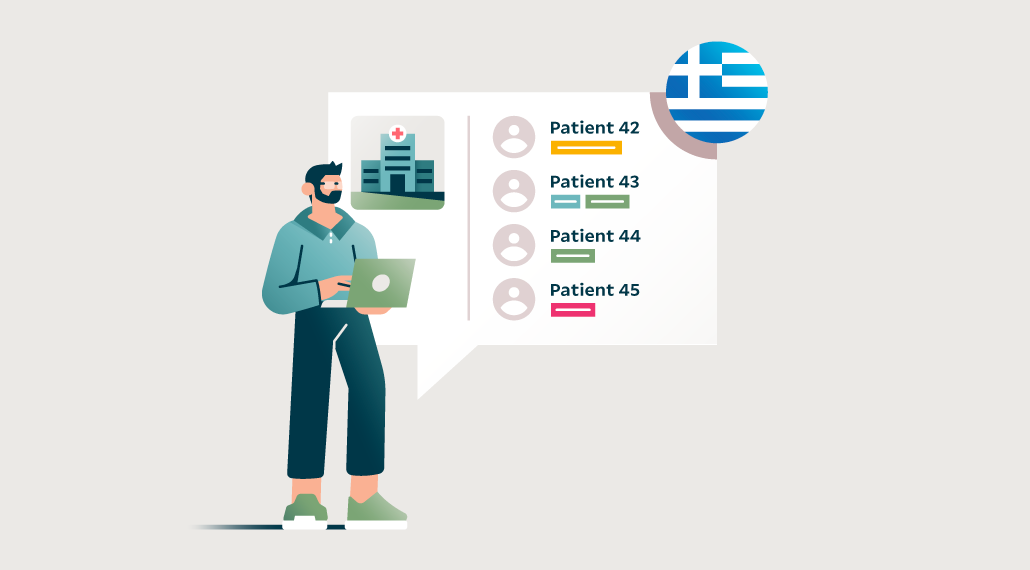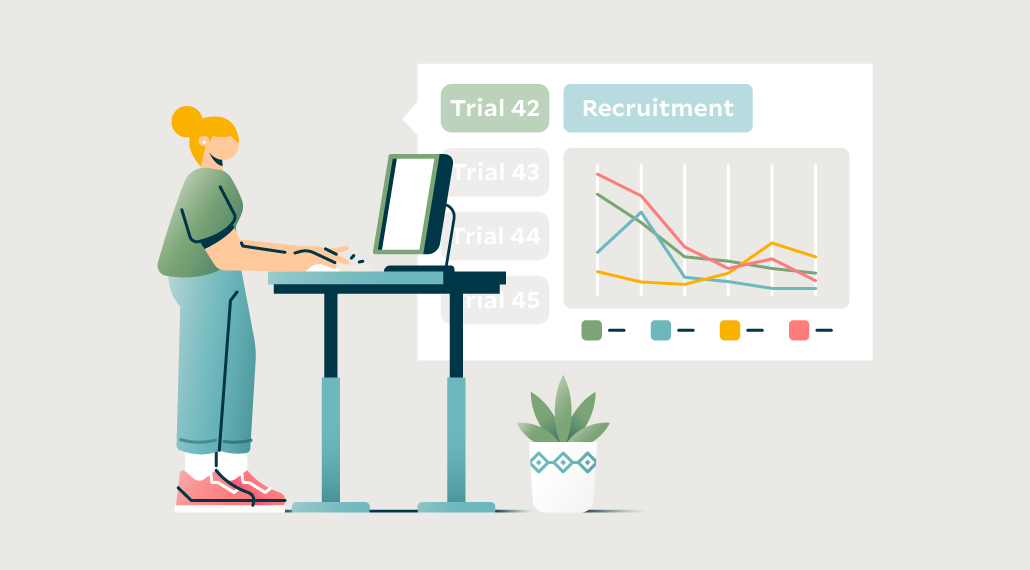January 25th, 2023
How Sites Can Use StudyTeam Post-Enrollment
By OneStudyTeam

While the StudyTeam® platform was originally built to empower sites to more effectively pre-screen and enroll their studies, a growing number of site teams continue to use this software post-enrollment for clinical trials.
“At least 50% of the sites I work with continue to use StudyTeam for visit management, data continuity, and keeping track of all enrolled patients within one, unified system,” said Will Franco, Senior Site Adoption Associate for OneStudyTeam. “This helps sites keep all secure data and trial progress of enrolled patients in one place.”
While every site group uses StudyTeam software a bit differently for clinical trials depending on their protocol needs and therapeutic areas, StudyTeam for Sites users can easily continue benefiting from the platform post-enrollment. Here are seven tools you can continue using in StudyTeam for workflow continuity.
Visit Schedule, to prevent protocol deviations
Sites can use the Visit Schedule, with visit window tolerances built in per protocol, to save time with patient scheduling and to ensure pre-screening and screening visits are scheduled in the correct windows.
The visit window tolerances that are built in can be used for visits that extend past the enrollment phase, for the entire length of the study.
“That includes treatment visits for different arms and cycles, end-of-treatment visits like follow-ups, and anything else the site needs to bring the patient in for, such as imaging visits."
Avoiding protocol deviation is important during any phase of the clinical trial, keeping overall study timelines on track.
Visit Checklists, to ensure all tasks are completed
Visit Checklists also simplify patient management during pre-screening and screening visits for certain sites, ensuring tests and Visit Activities–tasks specific to that visit–are completed in a timely manner. If you work with OneStudyTeam to configure a Visit Schedule, you get Visit Checklists built into all pre-enrollment and post-enrollment visits per protocol needs.
“Sites that have a Visit Schedule configured also have the capability to create their own additional Visit Checklists and Visit Activities to check off within those lists,” Englund said. “This gives site teams an easy tool to improve the consistency of the patient experience, and the added flexibility of building additional Visit Checklists as the need comes up.”
Both the Visit Schedule and Visit Checklists make workflows easier.
“When sites use the Visit Schedules and Visit Checklists post-enrollment, they are able to quickly identify when visits should be scheduled and exactly what needs to be accomplished during those visits, instead of having to refer to the protocol constantly,” Englund said.
Calendar integration, to avoid double-booking
No matter what phase a clinical trial is in, you can continue to benefit from StudyTeam’s calendar integration capability. At the beginning of the trial, you can sync your external calendars to the enrollment management platform, so times blocked off in external calendars are visible within StudyTeam. That means that even past the pre-screening and screening phases, staff can view each other’s availability when scheduling visits, avoiding scheduling conflicts.
Patient database, to find patient candidates for other trials
“The more patients that sites put into StudyTeam, the bigger the patient database becomes within the platform,” Englund said, “This can support site staff in their ongoing work of enrolling patients in other clinical trials.”
Patient diagnoses can be added to any Patient Card. Within the patient database, you can search for patients with or without a specific diagnosis. You can sort patients that match the right criteria and move them to other studies with a few clicks of a button. Additionally, you can continue adding to Patient Cards throughout trials to keep your whole site team up-to-date on changes in patient information.
Patient Logs, to continue tracking valuable information
Patient Logs can be added into StudyTeam for Sites at any point during a trial. For example, there may be customized information that sponsors ask you to track. That could look like a log of medications patients are taking in conjunction with the therapy they are receiving, or a log to track patient reimbursements.
Reporting, to inform recruitment tactics
You can run database reports to generate valuable insights regarding enrollment performance. For example, You can use the Source Report to evaluate recruitment sources, determining which ones performed best, and which you should continue to invest in.
StudyTeam’s eSource suite, to more effectively capture and manage source data in your clinical trials
Use eSource in your clinical trials to easily and securely capture all data for patient visits electronically, from insurance statements to medication logs. StudyTeam’s eSource suite organizes source data into electronic patient binders, which are built into StudyTeam for your use. This feature is designed to increase data accuracy and protocol compliance – not only does it include data-error alerts based on preset ranges for patient data entry, but source documents are designed per protocol.
Ongoing support from OneStudyTeam, for ease of use
“Regardless of where they are in their clinical trials, OneStudyTeam caters to every site’s needs and processes,” Franco said. “We provide education and support tailored to the site and the technology we use. We work as a part of their team.”
Need support to get started using StudyTeam post-enrollment for your clinical trial? Reach out to your dedicated support specialist or contact our support team within the StudyTeam for Sites app.
Related Posts

How Does a Trial Manager in Greece Improve Clinical Trial Operations with StudyTeam®?
Dimitris Tziogas, local trial manager at a biotechnology company in ...
Read More
How to Address Key Clinical Trial Challenges, According to Clinresco Centres in South Africa
There’s no single solution to overcoming a research site’s specific ...
Read More
3 Clinical Trial Billing Challenges Research Sites Solve with StudyTeam
Challenge 1: Complicated coverage analysis Challenge 2: Tedious budgeting ...
Read More

.png?width=64&name=OST%20Transparent%20(1).png)